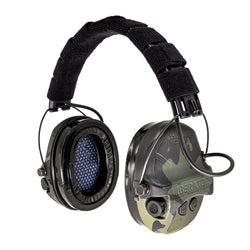At the United States Marine Corps’ 250th anniversary in 2025, it stands at a pivotal moment in its storied history. No longer defined solely by amphibious assaults and expeditionary warfare, the Corps is undergoing a sweeping transformation to meet the demands of 21st-century conflict.
From modernization of equipment and doctrine to cyber warfare capabilities and revolutionary training paradigms, the Marine Corps is reshaping itself into a leaner, smarter, and more agile force ready to confront adversaries across physical and digital battlefields.
Modernization Efforts: Force Design and Technological Leap
At the heart of the Marine Corps’ transformation is Force Design 2030, a strategic blueprint introduced by General David H. Berger, the 38th Commandant of the Marine Corps. This initiative reimagines the Corps as a distributed, expeditionary force, purpose-built for operations in contested maritime environments, especially within the Indo-Pacific region, where peer adversaries pose evolving challenges.
Central to this transformation is a deliberate shift away from legacy platforms such as tanks and heavy artillery. Instead, the Corps is investing in lighter, more agile systems that support long-range precision fires, unmanned capabilities, and expeditionary advanced base operations (EABO). This divestment and reinvestment strategy reflects a broader commitment to mobility, survivability, and strategic reach.
Autonomous and unmanned systems are also taking center stage. The Marine Corps is embracing robotics and artificial intelligence to enhance battlefield effectiveness while minimizing risk to personnel. Technologies like Collaborative Combat Aircraft and one-way attack drones are being integrated to deliver lethal effects in environments where traditional platforms may be vulnerable or impractical.
To support these distributed operations, the Corps is overhauling its enterprise networks. Recognizing the importance of resilient communication in contested domains, it is building hardened systems capable of functioning under cyber and electronic warfare conditions. These intelligent networks will ensure that command and control remains intact even when adversaries attempt to disrupt or degrade communications.
Naval integration is another critical pillar. Initiatives such as Project Trident are designed to strengthen operational ties with the Navy, ensuring that maritime fires, amphibious operations, and joint force capabilities are synchronized across both services. This alignment is essential for projecting power across vast oceanic theaters and responding rapidly to emerging threats.
Ultimately, these modernization efforts go far beyond acquiring new equipment. They represent a paradigm shift in how the Marine Corps envisions warfare, one that emphasizes agility, survivability, and precision. The goal is to build a force capable of operating inside an adversary’s weapons engagement zone, enduring its pressures, and delivering decisive strikes when and where it matters most.

Cyber Warfare: The New Battlespace
In future conflicts, the first shots may not be fired from rifles or missiles, but through lines of code. Cyber warfare has emerged as a critical domain, and the Marine Corps is rapidly enhancing its capabilities to defend, disrupt, and dominate in the digital realm, recognizing that cyber superiority is no longer a luxury. It’s a necessity.
At the heart of this effort is the Marine Corps Cyberspace Operations Group (MCCOG), a specialized unit responsible for safeguarding the Marine Corps Enterprise Network (MCEN). MCCOG ensures that operational continuity is maintained even in the face of sophisticated cyber-attacks, acting as the digital shield for the Corps’ critical infrastructure.
Cyber operations are no longer siloed. They’re fully integrated into the broader framework of information warfare. This fusion includes electronic warfare, psychological operations, and influence campaigns, allowing the Marine Corps to shape the information environment and counter adversarial narratives with precision and speed.
To support this transformation, the Corps is investing heavily in the development of cyber Marines. These specialists undergo rigorous training to master both offensive and defensive digital tactics. Their skill sets include identifying system vulnerabilities, conducting penetration testing, and deploying countermeasures to neutralize threats before they escalate.
Training is also evolving through synthetic environments. Initiatives like Project Tripoli are bringing cyber warfare into the Live, Virtual, Constructive (LVC) training ecosystem. This allows Marines to rehearse digital engagements in tandem with physical operations, simulating complex scenarios that mirror real-world threats. These immersive exercises prepare Marines to operate seamlessly across both kinetic and cyber domains.
In an era where adversaries such as China and Russia wield advanced cyber arsenals, the Marine Corps is positioning itself to not only survive in the digital battlespace but to dominate it. The ability to protect networks, manipulate digital terrain, and outmaneuver cyber threats will be decisive in future conflicts.

Evolving Training: Preparing for the Unknown
Modern warfare has evolved far beyond traditional battlefields. Today’s conflicts unfold across cyberspace, electromagnetic spectrums, and cognitive domains, demanding a new kind of warfighter who is mentally agile, technologically fluent, and highly adaptable. In response, the Marine Corps is fundamentally transforming its training philosophy to prepare Marines for this multidimensional fight.
To cultivate intellectual agility, Marines are immersed in scenario-based learning environments that challenge them to think critically, make rapid decisions under pressure, and respond to evolving threats. These exercises simulate real-world ambiguity, forcing Marines to navigate uncertainty with confidence and clarity.
Technological fluency is another cornerstone of this transformation. Marines are now expected to master advanced systems, including unmanned aerial vehicles, cyber tools, and digital command-and-control platforms. Training incorporates hands-on experience with these technologies, ensuring that Marines are not just familiar with them but proficient in their tactical application.
Adaptability is instilled through exposure to unpredictable environments and diverse adversaries. Marines train across domains and alongside joint-force partners, building the resilience and flexibility needed to operate effectively in coalition warfare and dynamic operational theaters.
At the heart of this modernization effort is Project Tripoli, the Marine Corps’ flagship initiative for synthetic training. It introduces a Live, Virtual, Constructive (LVC) ecosystem that blends real-world exercises with virtual simulations and AI-driven adversaries. This scalable, immersive environment allows Marines to rehearse complex missions in ways that were previously impossible.
By leveraging simulated environments, Project Tripoli significantly reduces the cost and logistical burden of live exercises. Units can train without deploying physical assets, saving fuel, time, and wear on equipment. The integration of AI-driven “thinking adversaries” adds a layer of realism, as these opponents adapt to Marine decisions in real time, creating dynamic and unpredictable engagements that sharpen tactical awareness.
Virtual replicas of high-demand, low-density platforms—such as F-35s, loitering munitions, and NMESIS—enable widespread access to elite capabilities. Marines can train with systems that would otherwise be unavailable due to cost or scarcity. Additionally, digital replication of terrain, weather, and operational variables allows units to rehearse missions on the exact landscapes they’ll encounter in deployment, including joint and coalition force coordination.
Complementing this synthetic revolution is Project Triumph, which reimagines Marine education through outcome-based learning. The goal is to produce cognitively agile leaders who can think, decide, and act with precision in complex environments.
Under Project Triumph, Marines follow personalized learning paths that adapt to their individual strengths and weaknesses. Progress is based on mastery rather than time, allowing each Marine to advance at their own pace while receiving targeted support where needed.
AI assistants and wargaming tools play a central role in this new educational model. These technologies provide real-time feedback, simulate doctrinal scenarios, and even serve as adversaries in strategic exercises. Marines use them to explore options, test hypotheses, and learn from simulated outcomes in a risk-free environment.
Instructors, meanwhile, are shifting from traditional lecturers to facilitators of learning. They guide discussions, mentor students, and tailor instruction to the unique dynamics of each squad. This approach fosters deeper engagement and encourages peer-to-peer learning, especially in field-based applications like land navigation and tactical decision games.
As Lt. Gen. Benjamin Watson aptly stated, “It’s not the sage on the stage anymore—it’s the guide on the side.” This philosophy reflects the Marine Corps’ commitment to developing warfighters who are not only physically prepared but intellectually empowered to meet the challenges of modern conflict.
Project Trident: Naval Fires Integration
Project Trident focuses on building maritime fires professionals who can operate seamlessly across Navy and Marine Corps platforms. This includes aligning doctrine, tactics, and education to ensure joint effectiveness in littoral combat zones.
Maritime fires professionals are specialized warfighters trained to coordinate, direct, and execute offensive and defensive fires (like missiles, artillery, and electronic warfare) in maritime and littoral environments, which are the complex zones where land meets sea. These professionals are not just trigger-pullers; they’re integrators of multi-domain capabilities across both the Navy and Marine Corps
Cultural Shift
Perhaps the most challenging aspect of training modernization is cultural. The Marine Corps has long prided itself on live-fire excellence and physical rigor. Embracing synthetic environments and digital tools requires a shift in mindset. But it is one that leadership is actively cultivating.

Strategic Context: Preparing for Peer Conflict
The urgency behind these transformations is driven by the evolving global threat landscape. The Marine Corps is preparing for potential conflicts with near-peer adversaries like China and Russia, nations that possess advanced technologies, long-range weapons, and sophisticated information warfare capabilities.
In the Indo-Pacific, for example, the Corps envisions operating as stand-in forces within the first island chain, leveraging mobility, stealth, and precision to counter Chinese aggression. These forces must be able to survive in contested zones, communicate securely, and deliver decisive effects, all while remaining agile and dispersed.
Final Thoughts
At the Marine Corps’ 250th birthday, it is not resting on tradition, it is reinventing itself. Through bold modernization, cyber integration, and transformative training, the Corps is preparing to fight and win in tomorrow’s battlespace.
This is not just evolution, it’s revolution. The Marine Corps of 2030 and beyond will be defined not by the weapons it carries, but by the networks it commands, the data it exploits, and the adaptability of its warriors. In the face of rising threats and technological upheaval, the Corps is proving once again why it remains America’s premier crisis-response force.
*The appearance of U.S. Department of Defense (DoD) visual information does not imply or constitute DoD endorsement.









